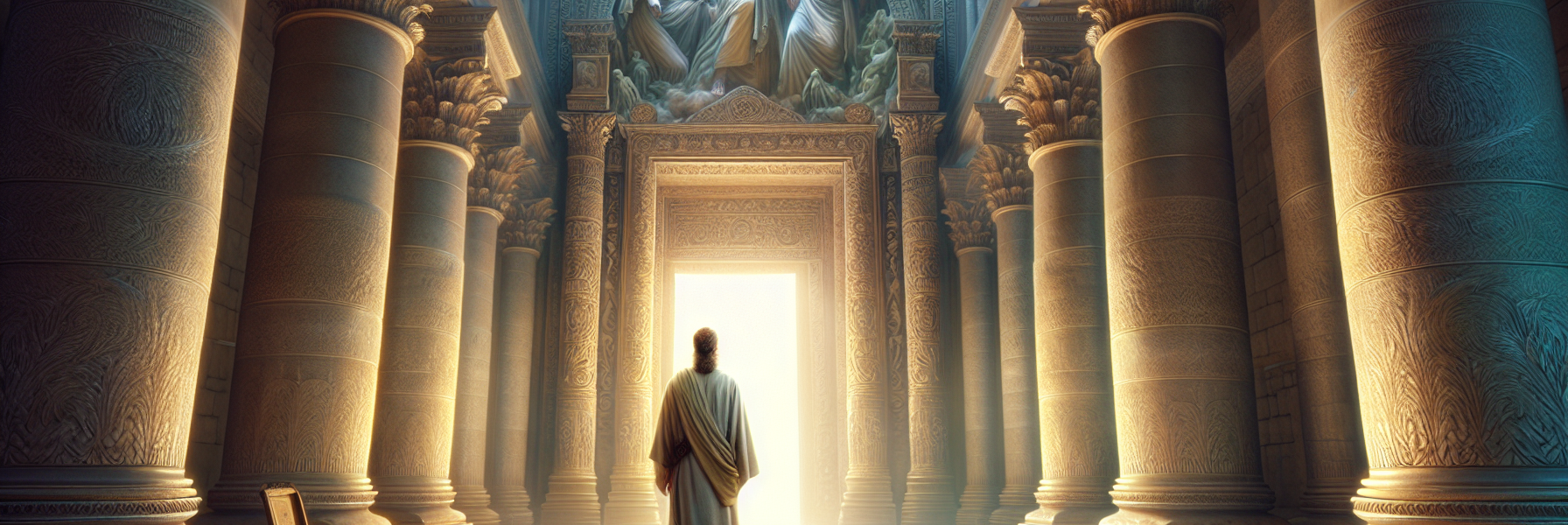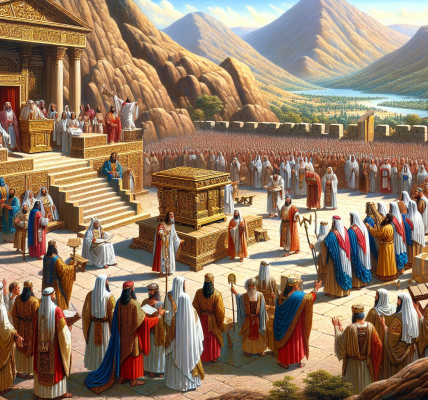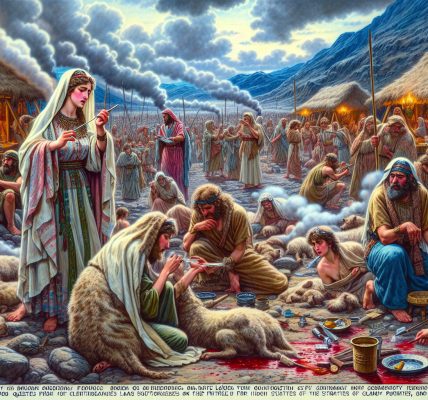**The Vision of the Temple: Ezekiel’s Journey into the Inner Sanctuary**
The hand of the Lord had brought Ezekiel into the inner court of the temple, a place of profound holiness and divine mystery. The air was thick with the presence of the Almighty, and the prophet’s heart trembled with reverence as he stood before the magnificent structure. The voice of the Lord had instructed him to observe carefully, to measure every detail, and to record the vision with exactness, for it was a revelation of heavenly truths.
Before him stood the temple, its outer walls gleaming with polished stone, reflecting the radiance of the Shekinah glory. The entrance to the inner sanctuary was framed by massive doorposts, each intricately carved with cherubim and palm trees—symbols of divine guardianship and eternal life. The cherubim had two faces: one of a lion, representing strength and majesty, and one of a man, embodying wisdom and divine order. Between them were the palm trees, their leaves spread in perpetual praise, a reminder of the righteous who flourish in the courts of God.
Ezekiel stepped forward, his sandals whispering against the smooth pavement as he crossed the threshold into the nave, the *hekal*. The space was vast, stretching forty cubits in length and twenty cubits in width. The walls were lined with panels of cedar, their rich grain adorned with carvings of cherubim and palm trees, overlaid with gold that caught the flickering light of the sacred lamps. The floor beneath his feet was made of cypress wood, polished to a mirror-like finish, as if the very ground he walked upon was sanctified.
At the far end of the nave stood the entrance to the Most Holy Place, the *debir*. The doorposts here were narrower than those of the outer sanctuary, yet no less majestic. The prophet’s breath caught as he beheld the thick veil that separated the holy from the most holy—a barrier that no man could cross except by divine appointment. The voice of the Lord spoke again, directing Ezekiel to observe the side chambers that surrounded the temple, three stories of rooms built into the thickness of the walls. These chambers were for the priests, a place for the sacred vessels and the offerings, each level slightly wider than the one below, ensuring the stability of the structure.
As Ezekiel moved along the outer wall, he noted the precise measurements—each chamber was six cubits in length, four in width, and five in height. The doors of the side rooms faced inward, toward the temple, symbolizing that all service and ministry must be oriented toward the presence of God. A walkway encircled the temple, leading upward by winding stairs, allowing the priests to move between the levels without defiling the sacred space.
The prophet’s gaze then turned to the western end of the temple, where a separate building stood—a structure of equal holiness, its purpose veiled in mystery. The voice of the Lord declared that this too was part of the divine pattern, a reminder that the plans of God are perfect and beyond full human comprehension.
Finally, Ezekiel was shown the altar of sacrifice, standing in the inner court, its square base broad and unyielding, its horns reaching upward like the prayers of the saints. The scent of incense lingered in the air, mingling with the faint memory of burnt offerings—a foreshadowing of the ultimate sacrifice yet to come.
As the vision faded, Ezekiel fell to his knees, overwhelmed by the weight of glory. The temple was not merely a building; it was a reflection of heaven itself, a promise of restoration, and a testimony to the holiness of God. The Lord had shown him these things so that Israel might remember, repent, and return—so that they might know that He alone is God, and in His presence, there is fullness of joy forevermore.
And so, with trembling hands, Ezekiel recorded all that he had seen, sealing the vision for generations to come, a testament to the faithfulness of the Lord who dwells among His people.




